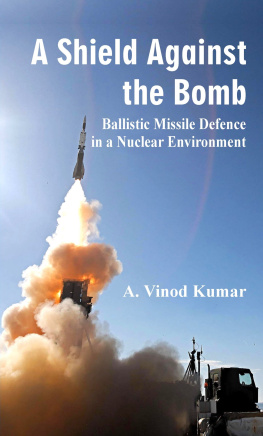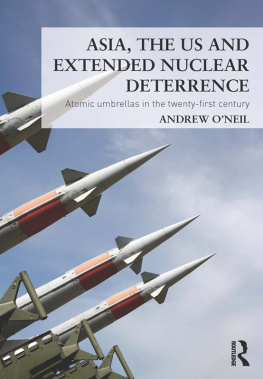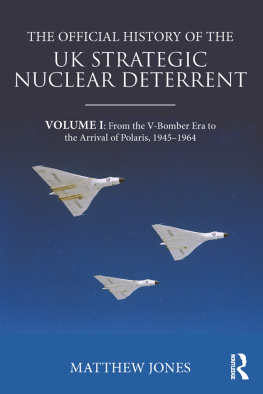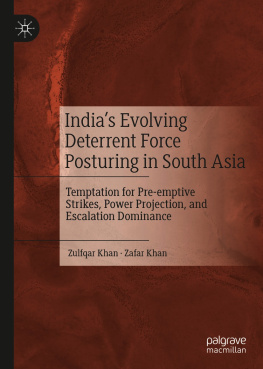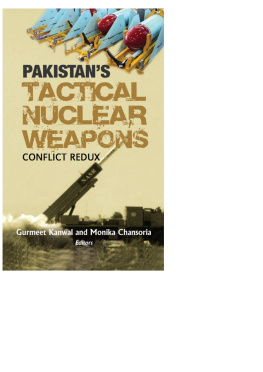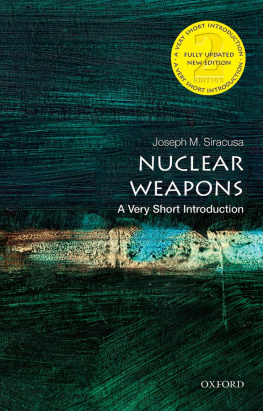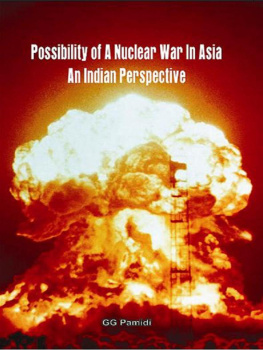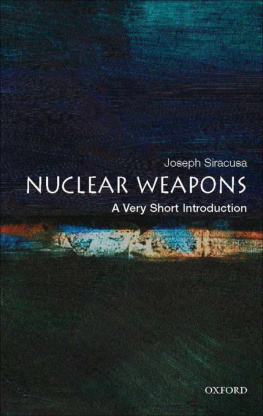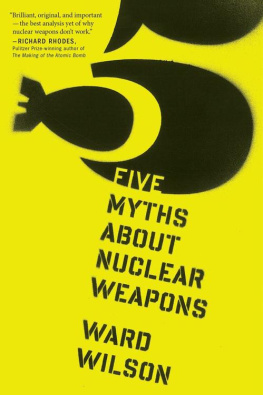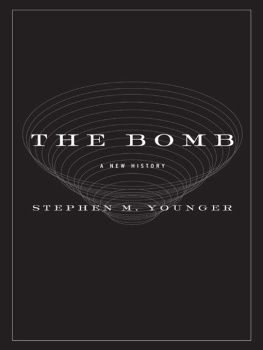Published by
Vij Books India Pvt Ltd
(Publishers, Distributors & Importers)
2/19, Ansari Road
Delhi 110 002
Phones: 91-11-43596460, 91-11-47340674
e-mail:
web: www.vijbooks.com
Copyright 2019, A. Vinod Kumar
ISBN: 978-93-88161-43-5
All rights reserved.
No part of this book may be reproduced, stored in a retrieval system, transmitted
or utilized in any form or by any means, electronic, mechanical, photocopying,
recording or otherwise, without the prior permission of the copyright owner.
Application for such permission should be addressed to the publisher.
The views expressed in this monograph are of the author in his personal capacity
and do not represent the views of any organisation he belongs to.
I t should not sound melodramatic when I say that I grew up watching sounding rockets.
The reference is not to the Diwali rockets unique to Indians, but of the Nike-Apache sounding rockets that used to be launched every Thursday from the launch pad of the Thumba Equatorial Rocket Launching Station (TERLS), a premier institution under the Indian Space Research Organisation (ISRO), located in Thiruvananthapuram at the southern tip of India. I was brought up in this campus (which was also the cradle of Indias space programme), thanks to my fathers employment at the Vikram Sarabhai Space Centre (VSSC), of which TERLS is an integral part or vice versa. The benefit of passing my childhood in this sprawling and historic campus was the unique opportunity to witness, at close quarters (though too young then to realise its enormity and importance), the early years of the Indian space programme (which I had also captured in my dissertation for the diploma programme in journalism at the Thiruvananthapuram Press Club), and also the honour of seeing in person some legendary figures like Dr V.R. Gowarikar, Dr U.R. Rao, Dr Brahm Prakash, Dr A.P.J. Abdul Kalam and Dr S.C. Gupta, to name a few, many of whom adorned senior positions in VSSC and ISRO, and resided among us in our community.
Being a part of the VSSC community had given my generation the privilege of experiencing the emotions and passions that were associated with the landmark ventures in those blossoming years of the Indian space programme, be it the enormous Satellite Launch Vehicle (SLV) projects ranging from SLV-3, (Augmented) ASLV, (Polar) PSLV to (Geo-synchronous) GSLV, or the sterling satellite family comprising of Indian Remote Sensing (IRS) satellites and the Indian National Satellite System (INSAT) series. We lived this phenomenon through their images and omnipresence in our daily livesas small replicas that doubled up as mementoes adorning our showcases, the recycled rocket cones that served as ubiquitous letter boxes, and the larger-size ones that stood tall as mighty silhouettes across the sprawling VSSC campus.
These were the memories that dotted my mind when Dr C. Raja Mohan, as the convenor of the Indian Pugwash Society in 2004, assigned me with the task of preparing a working paper on ballistic missile defences as part of a Department of Atomic Energy project. One of the first things he then asked me to do was to understand the technology (of missile interception) before researching and writing about missile defences and its strategic dimensions. Many analyses of that time were seen to be loosely using missile defence nomenclatures like national missile defence (NMD) and theatre missile defence (TMD) without clear distinctions made of the varied technological concepts. Dr Raja Mohan, hence, sent me to Commander P.K. Ghosh, then a Senior Fellow at the Centre for Strategic Studies and Simulation, United Services Institution (USI), who had by then done some pioneering work in the Indian strategic community on missile defence. The topic was then just about dawning on the international scene (or rather making a reappearance in the post-Cold War strategic milieu) thanks to the decision of the then US President, George W. Bush, to reinvigorate the US missile defence programme (which was pursued in a limited form by the Clinton Administration) and pursue a multi-layered architecture that could intercept incoming missiles at all stages of its flightboost, mid-course and terminal.
The working paper, though completed, could never be published. However, I was able to continue the research on missile defences after joining IDSA in May 2006. It was in December 2006 that I presented my first research paper on India and missile defence at IDSA. A month before my paper, Indias Defence Research and Development Organisation (DRDO) announced, for the first time, that it was pursuing a BMD programme and that an interceptor test will be done in the next few weeks. The timing was purely coincidental though it was some sort of destiny that my research quest on BMD at IDSA went parallel with the DRDOs development track on this technological front.
This paper was readied for publication with the title A Phased Approach to Indias Missile Defence Planning. While all the three international referees who reviewed the article termed it as path-breaking and innovative, my Director General decided to seek an additional opinion by sending it to a highly-placed official at DRDO, who, in turn, opined against its publishing. The apparent reason was that I was sceptical of the DRDOs claims of successful interceptions and had suggested the possibility of foreign systems coming into the Indian missile defence planning at some point of time in order to provide a nation-wide coverage. In the coming years, DRDO undertook many developmental tests of two endo-atmospheric interceptorsPrithvi Air Defence (which was projected as an exo-atmospheric system) and Advanced Air Defence (AAD)and went on to declare them as ready for deployment. Subsequently, the agency also began work on a longer-range exo-atmospheric interceptor. As things stand today, the Indian government is moving ahead with the plan to acquire the S-400 missile/air interceptor from Russia. Moreover, the US government has included India in its Strategic Trade Authorisation list that could pave the way for even American missile defence platforms making their way into the Indian inventory in the not so distant future, thus validating the prognosis in the abovementioned article.
Though my work on missile defence has been going on for more than a decade, I should be up-front in describing this monograph as a collation of my interim research findings. This is largely because the technology continues to evolve in terms of its capability and objective (of fool-proof interception), and the strategic dimensions of introducing this capability in a military environment, or a nuclear theatre, continues to remain at a nascent stage. Despite the technology being at various stages of development and numerous instances of accurate tracking and interception (often in simulated or ideal conditions), no military leader in charge of an operational strategic interception system or a technology leader overseeing such development can affirm with authority that a fool-proof shield has been put in place. Similarly, the strategic dimensions, including the implications of the mass pursuit of strategic interception technologies by the nuclear-armed states, continue to remain fluid or in evolutionary stages. In other words, no nuclear-armed power can make a compelling judgement on whether their missile defence capability has given them the decisive edge to deter their potential rivals, nor can a state confronted with a BMD-armed rival be assured that the shift to defensive posture has mitigated the possibility of future aggression or offensive posturing. On the contrary, as this study seeks to show, the possession of a BMD capability in a nuclear theatre has only added to its net deterrence capability, which could be converted into offensive posturing, thereby menacing the other actor(s) in the equation.

